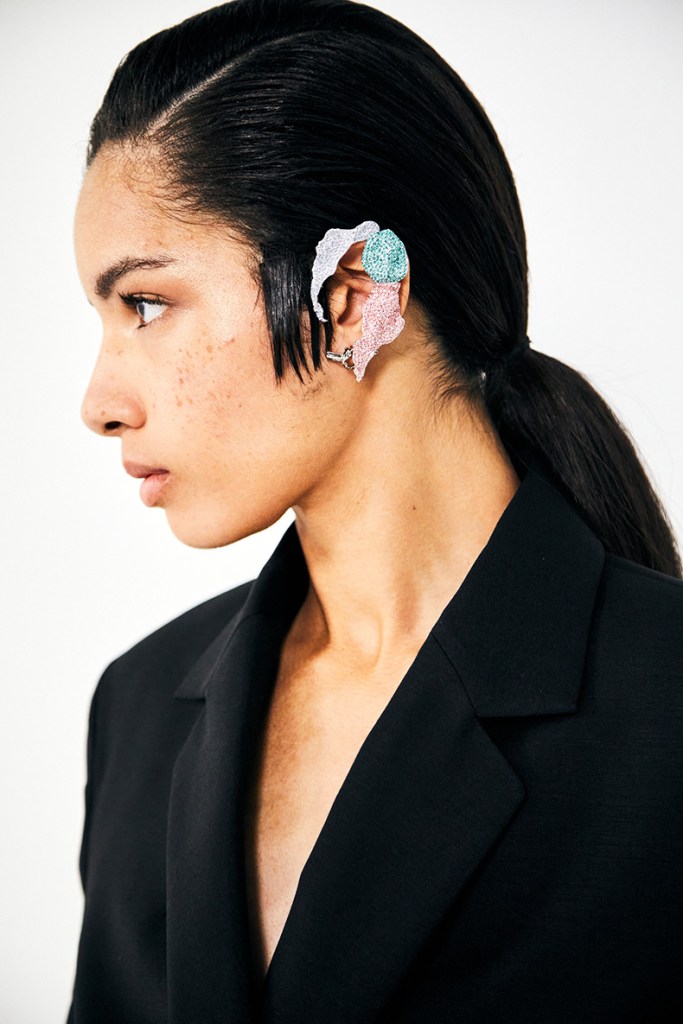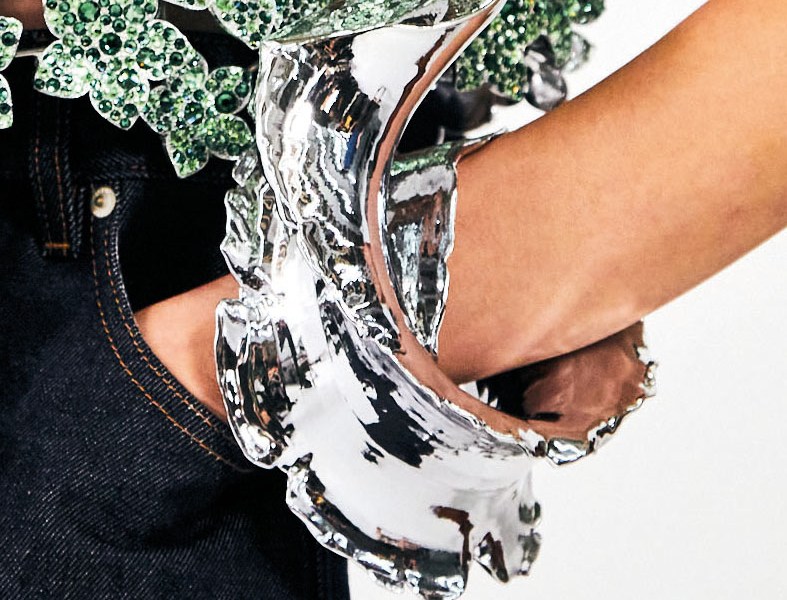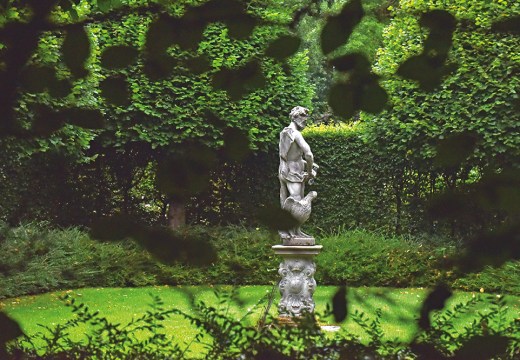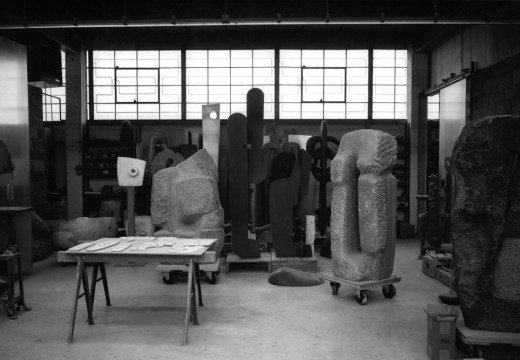From the February 2024 issue of Apollo. Preview and subscribe here.
Lynda Benglis is probably still best known for the advert she ran in Artforum in 1974 where she posed naked, but for a pair of sunglasses and a large plastic dildo, to coincide with her exhibition at Paula Cooper Gallery in New York. It was a way of ‘mocking sexuality, machoism, and feminism’, she explained in an interview.
Benglis has never played ball with the art establishment of New York and now lives mainly in Santa Fe, away from the madness and pretension of the art capital of the world. From the first time Benglis poured liquid latex on to a floor to resemble giant slicks of colourful paint she has been renowned as an artist who plays with form and material to frequently delightful effect.
In the 1990s Benglis began working with clay and in the 2010s she started producing a series of works she called Elephant Necklace. She would push clay through an extruder and twist it into the shape of the sculpture. These forms were then enlarged, bearing all the marks of manipulation and making that went into them. It is hard not to read these sizeable works as somehow biological. Benglis has said that they are ‘artifacts that I imagine as extrusions of life’, but then she has also said that they are inspired by blown-out tyres.

Glitter Fragment Earcuff (2023), Loewe x Lynda Benglis. Photo: Molly Lowe
In October last year, these mechanical secretions made an appearance in Paris on the runway of Loewe’s Spring/Summer 2024 show. In shiny gold, silver and matt black, these alien structures towered over people, exuding an oddly compelling air as the audience filed in for the show. It might not have hurt that Loewe is also renowned for its elephant handbags – but perhaps this is a joke too far.
The next surprise was seeing passages from the Elephant Necklace sculptures not as artworks but translated into jewellery. Models strode down the catwalk in Loewe’s high-waisted trousers with segments of these sculptures wrapped around their wrists. At some stage they looked like wisps of metal fragment caught on an arm, but in other forms they seemed to defy gravity as great chunks of metal hung off the models’ bodies.
This was just the starting point of a collection of jewellery that Benglis has developed with Loewe and is launching this month. She has not confined herself to the shapes of the Elephant Necklace but, instead, delved into other aspects of her oeuvre to find suggestive forms that would work on the body, such as ear cuffs made of silver and crystals draping the entire ear in confectionery-coloured sparkle. But some of the jewellery started from less precious materials, growing out of Benglis’s paper sculptures. Fragments of folded paper were scanned and cast in coloured aluminium using a process of colouring that was developed especially for these cuffs. Similarly, brooches and rings that look like knotted and twisted strands of metal started life as fibres wrapped around each other by Benglis as she played with form in the most literal way. This is not the first time Benglis has made a brooch that conflates the image of fabric and metal. In 1991, for example, she made the Olympia Pin, a silver brooch that looked like a bow of ribbon. Yet somehow the jewellery for Loewe is much less smooth. The manufacturing processes are more alert to the process of creation and the irregularities of the human touch seem more present.
Talking about this collection, Benglis says that ‘the body sculptural idea has always interested me. In fact jewellery is the first thing that I noticed when I was a kid and that led me into making art.’ In the same interview she goes on to say, ‘I just wanted [the jewellery] to roll, to swing, to move, to have a gesture.’ Using decoration of the body to create character and individuality seems so obvious an evocation of Benglis’s exploration of form and feminism it is curious that it hasn’t been done before. She also says that ‘making art was a way of making large jewellery’. Now she seems to be using small jewellery to make art, co-opting everybody that wears it into a statement about what sort of a woman they are and what decoration means in the 21st century. As she puts it, ‘When I did the sculpture it was décor, and décor mocking décor’. With Benglis the joke is often the point.
From the February 2024 issue of Apollo. Preview and subscribe here.
Unlimited access from just $16 every 3 months
Subscribe to get unlimited and exclusive access to the top art stories, interviews and exhibition reviews.













![Masterpiece [Re]discovery 2022. Photo: Ben Fisher Photography, courtesy of Masterpiece London](http://www.apollo-magazine.com/wp-content/uploads/2022/07/MPL2022_4263.jpg)
Are the art market’s problems being blown out of proportion?